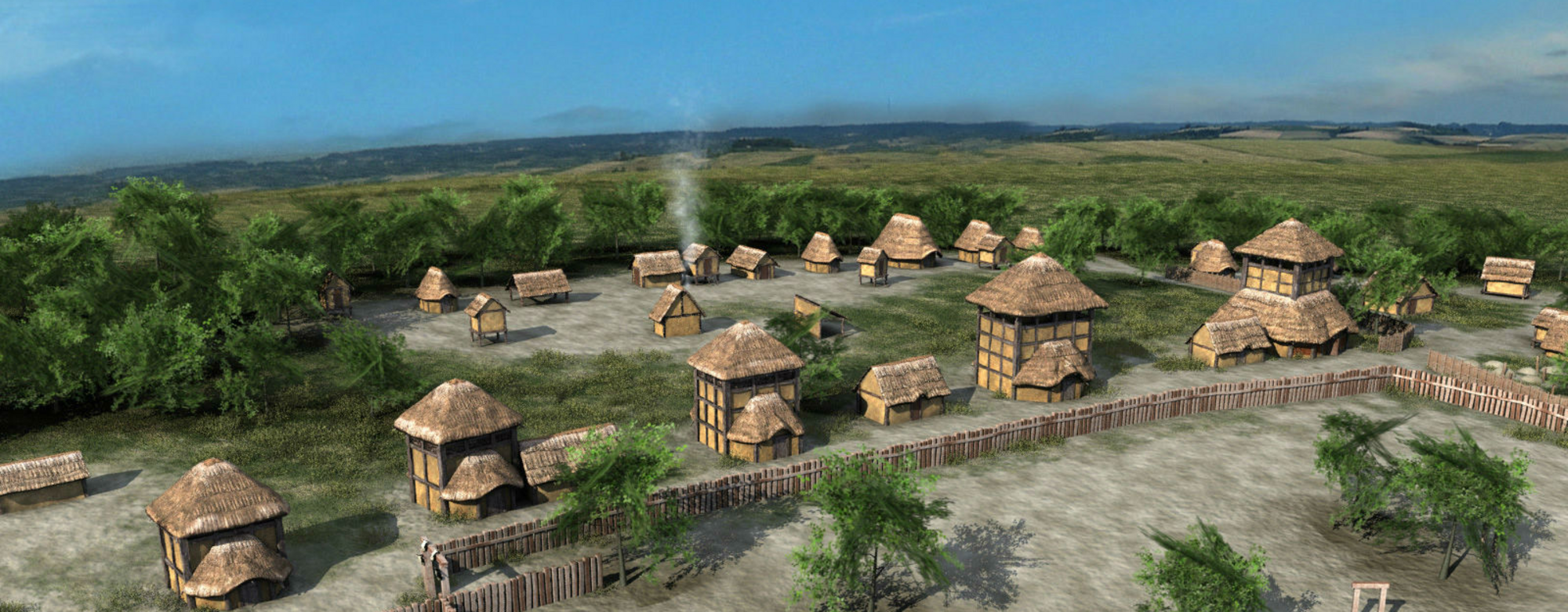
- Home
- The Gallic village
- The birth of the village
In about 180 BC, a large group of humans settled on the chalk plain some forty metres above a bend in the Aisne, on its south bank. Economic criteria, control of the natural route of communication, vast pastures in the valley and the lighter arable soils on the plateau above were the basic reasons for this choice. The military camps established during the Second Empire (Sissonne, Aisne, Mourmelon and Suippes, Marne) certainly provided a good picture of the landscape in the second century BC: patches of light woodland and large areas of grassland dotted with clumps of thorny scrub, the "savart champenois".
The new arrivals could not fail to notice the large burial mounds on the first terrace of the plateau, some circular and others rectilinear, dating from the final Bronze Age. Up on the plateau itself, a tumulus surrounded by a circular ditch some twenty metres in diameter rose remarkably high above the ground. Its grandiose intent was clear since it was visible for several kilometres to the north and east. This mound was to play an essential role, since it was later assimilated into a hero's tomb used for ancestor cult worship – the Greek heroon – and served as a reference point for the ground layout of the village.




